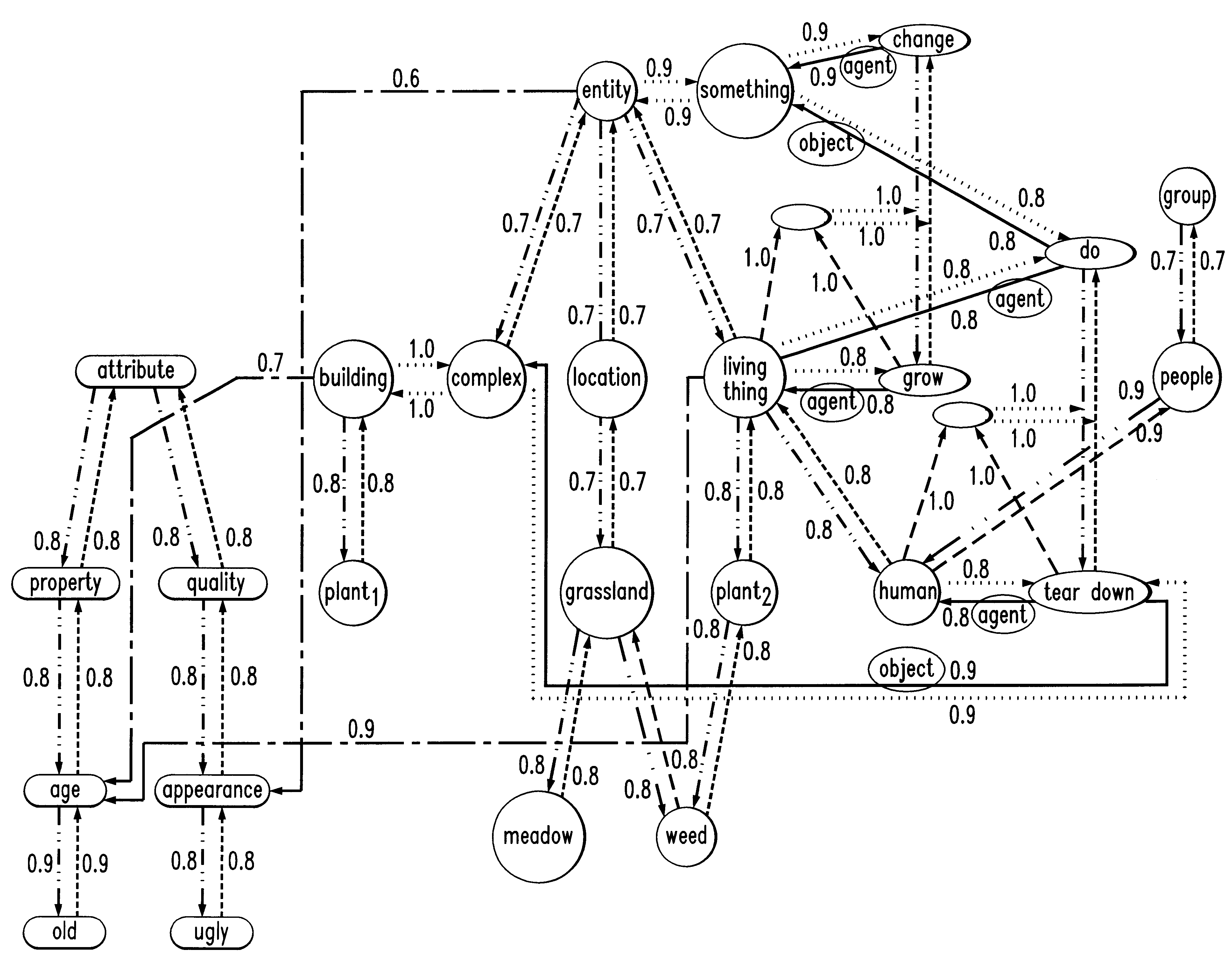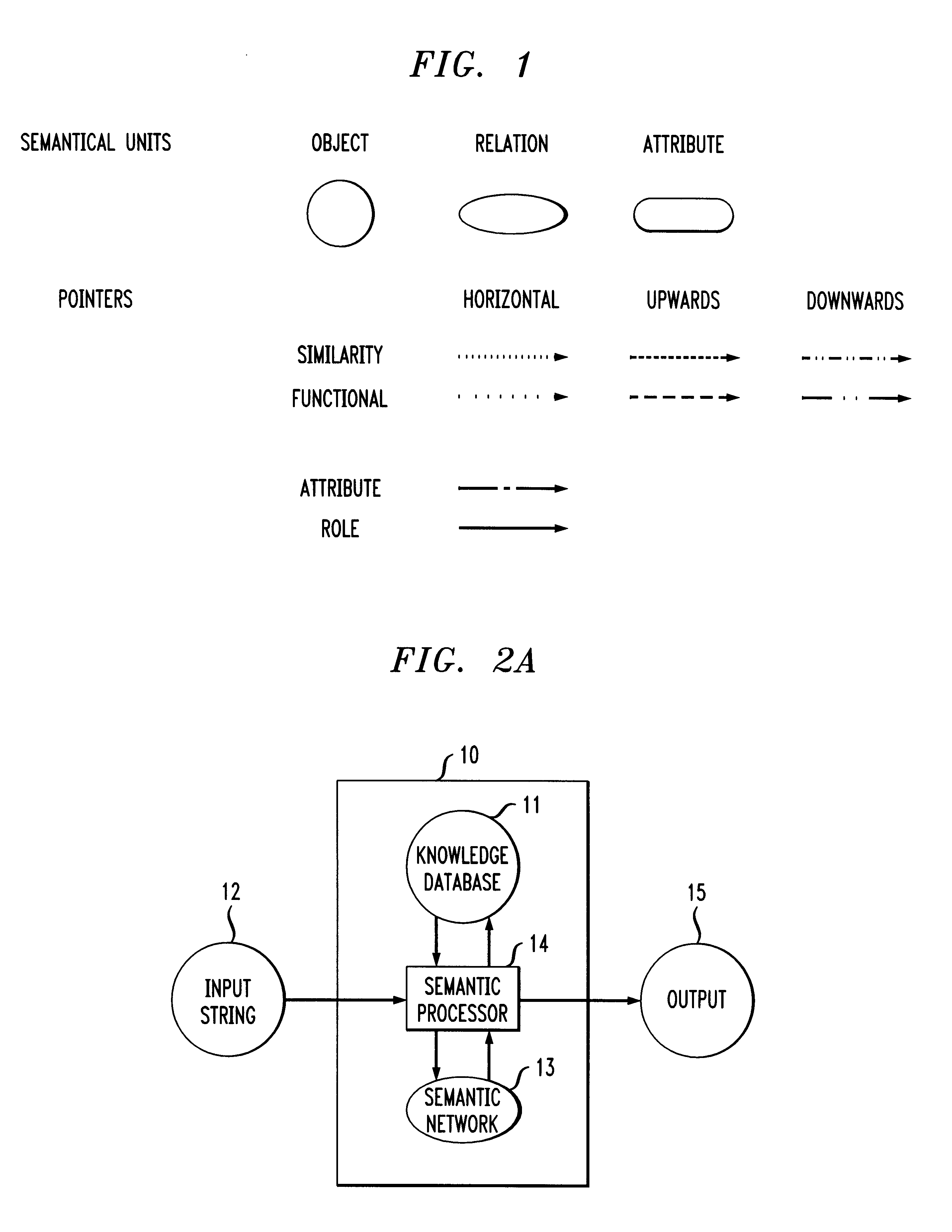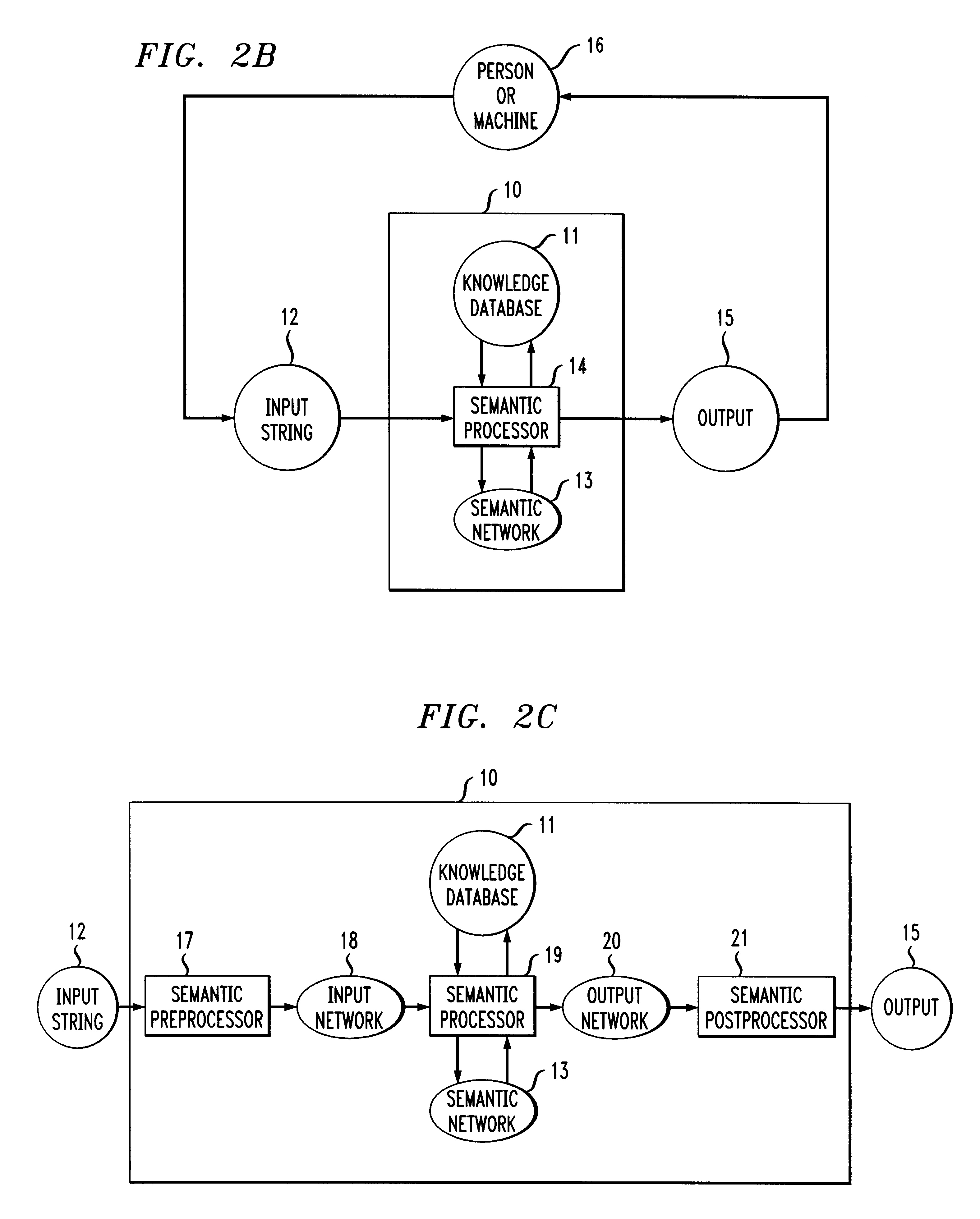Processing of textual information and automated apprehension of information
a textual information and automatic apprehension technology, applied in the field of automatic apprehension of textual information, can solve the problems of not making much progress, neglecting the structure of the world, and concentrating too much on the logical structure of the text itsel
- Summary
- Abstract
- Description
- Claims
- Application Information
AI Technical Summary
Benefits of technology
Problems solved by technology
Method used
Image
Examples
first embodiment
present invention, an input string 12 (e.g. a text or a speech) is transformed into a semantic network 13 of semantical units, as illustrated in FIG. 2A. This might be done by a semantic processor 14 in conjunction with a knowledge database 11. The semantic processor 14 transforms the resulting semantic network 13 into an appropriate output 15 (e.g. a text or a speech or a reaction).
second embodiment
ment adds one or several persons and / or one or several machines of type 10 to the first embodiment, closing the interaction cycle so that an extended communication can take place, as illustrated in FIG. 2B.
third embodiment
present invention, an input string 12 (e.g. a text or a speech) is transformed into a formal network 18 (herein also referred to as input network) of semantical units, as illustrated in FIG. 2C. This might be done by a semantic preprocessor 17. There are various conventional techniques for this transformation, as will be addressed below.
Semantic preprocessor: The semantic preprocessor 17 transforms an input string 12 into an input network 18 (formal network). A semantic preprocessor, as used in connection with a speech recognition system for example, might consist of four parts:I. Voice recognition software to transform speech into an input string. This feature is optional as the input data may already be presented in written form.II. Syntactic (Chomskyan) parser to create a constituent structure of the input string.III. Grammatical parser to create a functional structure of the input string's constituent structure. The grammatical theories of Lexical Functional Grammar or General P...
PUM
 Login to View More
Login to View More Abstract
Description
Claims
Application Information
 Login to View More
Login to View More - R&D
- Intellectual Property
- Life Sciences
- Materials
- Tech Scout
- Unparalleled Data Quality
- Higher Quality Content
- 60% Fewer Hallucinations
Browse by: Latest US Patents, China's latest patents, Technical Efficacy Thesaurus, Application Domain, Technology Topic, Popular Technical Reports.
© 2025 PatSnap. All rights reserved.Legal|Privacy policy|Modern Slavery Act Transparency Statement|Sitemap|About US| Contact US: help@patsnap.com



